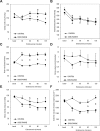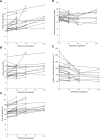The spectrum of cardiovascular effects of dobutamine - from healthy subjects to septic shock patients
- PMID: 29340539
- PMCID: PMC5764562
- DOI: 10.5935/0103-507X.20170068
The spectrum of cardiovascular effects of dobutamine - from healthy subjects to septic shock patients
Abstract
Dobutamine is the inotrope most commonly used in septic shock patients to increase cardiac output and correct hypoperfusion. Although some experimental and clinical studies have shown that dobutamine can improve systemic and regional hemodynamics, other research has found that its effects are heterogenous and unpredictable. In this review, we analyze the pharmacodynamic properties of dobutamine and its physiologic effects. Our goal is to show that the effects of dobutamine might differ between healthy subjects, in experimental and clinical cardiac failure, in animal models and in patients with septic shock. We discuss evidence supporting the claim that dobutamine, in septic shock, frequently behaves as a chronotropic and vasodilatory drug, without evidence of inotropic action. Since the side effects are very common, and the therapeutic benefits are unclear, we suggest that dobutamine should be used cautiously in septic shock. Before a definitive therapeutic decision, the efficacy and tolerance of dobutamine should be assessed during a brief time with close monitoring of its positive and negative side effects.
A dobutamina é o inotrópico mais comumente utilizado em pacientes com choque séptico, com o objetivo de aumentar o débito cardíaco e corrigir a hipoperfusão. Embora alguns ensaios clínicos tenham demonstrado que a dobutamina pode melhorar a hemodinâmica sistêmica e regional, outras pesquisas identificaram que seus efeitos são heterogêneos e imprevisíveis. Nesta revisão, analisamos as propriedades farmacodinâmicas da dobutamina e seus efeitos fisiológicos. Nosso objetivo foi demonstrar que os efeitos da dobutamina podem diferir entre voluntários saudáveis, estudos experimentais e insuficiência cardíaca clínica, em modelos de estudo em animais e em pacientes com choque séptico. Discutimos as evidências que suportam a afirmativa de que a dobutamina utilizada no tratamento do choque séptico frequentemente se comporta como fármaco cronotrópico e vasodilatador, sem evidências de ação inotrópica. Como seus efeitos colaterais são muito comuns e os benefícios terapêuticos não são claros, sugerimos que ela deve ser utilizada com cautela no choque séptico. Antes de uma decisão terapêutica definitiva, a eficácia e a tolerabilidade da dobutamina devem ser avaliadas por um tempo curto com monitoramento estrito de seus efeitos positivos e efeitos colaterais negativos.
A dobutamina é o inotrópico mais comumente utilizado em pacientes com choque séptico, com o objetivo de aumentar o débito cardíaco e corrigir a hipoperfusão. Embora alguns ensaios clínicos tenham demonstrado que a dobutamina pode melhorar a hemodinâmica sistêmica e regional, outras pesquisas identificaram que seus efeitos são heterogêneos e imprevisíveis. Nesta revisão, analisamos as propriedades farmacodinâmicas da dobutamina e seus efeitos fisiológicos. Nosso objetivo foi demonstrar que os efeitos da dobutamina podem diferir entre voluntários saudáveis, estudos experimentais e insuficiência cardíaca clínica, em modelos de estudo em animais e em pacientes com choque séptico. Discutimos as evidências que suportam a afirmativa de que a dobutamina utilizada no tratamento do choque séptico frequentemente se comporta como fármaco cronotrópico e vasodilatador, sem evidências de ação inotrópica. Como seus efeitos colaterais são muito comuns e os benefícios terapêuticos não são claros, sugerimos que ela deve ser utilizada com cautela no choque séptico. Antes de uma decisão terapêutica definitiva, a eficácia e a tolerabilidade da dobutamina devem ser avaliadas por um tempo curto com monitoramento estrito de seus efeitos positivos e efeitos colaterais negativos.
Conflict of interest statement
Figures




References
-
- Rhodes A, Evans LE, Alhazzani W, Levy MM, Antonelli M, Ferrer R, et al. Surviving Sepsis Campaign: International Guidelines for Management of Sepsis and Septic Shock: 2016. Crit Care Med. 2017;5(3):486–552. - PubMed
-
- Rivers E, Nguyen B, Havstad S, Ressler J, Muzzin A, Knoblich B, Peterson E, Tomlanovich M, Early Goal-Directed Therapy Collaborative Group Early goal-directed therapy in the treatment of severe sepsis and septic shock. N Engl J Med. 2001;345(19):1368–1377. - PubMed
-
- Wilkman E, Kaukonen KM, Pettilä V, Kuitunen A, Varpula M. Association between inotrope treatment and 90-day mortality in patients with septic shock. Acta Anaesthesiol Scand. 2013;57(4):431–442. - PubMed
-
- Tacon CL, McCaffrey J, Delaney A. Dobutamine for patients with severe heart failure: a systematic review and meta-analysis of randomised controlled trials. Intensive Care Med. 2012;38(3):359–367. - PubMed
-
- Jellema WT, Groeneveld AB, Wesseling KH, Thijs LG, Westerhof N, van Lieshout JJ. Heterogeneity and prediction of hemodynamic responses to dobutamine in patients with septic shock. Crit Care Med. 2006;34(9):2392–2398. - PubMed
Publication types
MeSH terms
Substances
LinkOut - more resources
Full Text Sources
Other Literature Sources

